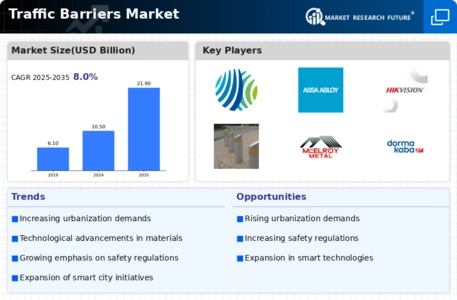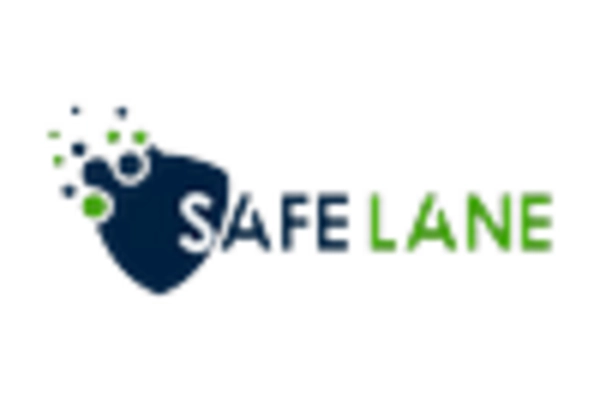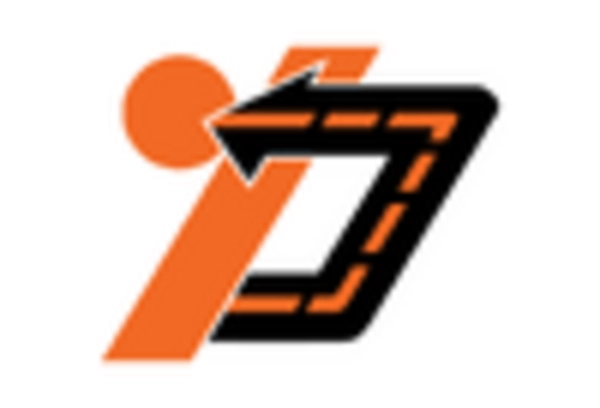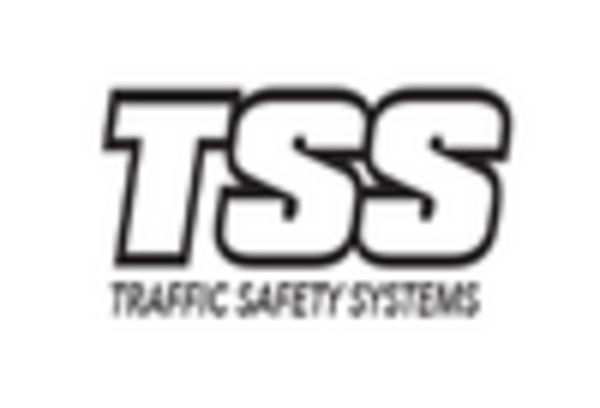Rising Vehicle Traffic
The Traffic Barriers Market is significantly influenced by the rising vehicle traffic across various regions. As urban populations grow, the number of vehicles on the road continues to increase, leading to a greater need for effective traffic management solutions. Recent statistics indicate that vehicle registrations have surged by over 15% in the last five years, necessitating the installation of traffic barriers to ensure safety and order. This growing demand for traffic control measures is prompting manufacturers to develop more efficient and durable barrier systems, thus propelling the Traffic Barriers Market forward.
Increased Road Safety Regulations
The Traffic Barriers Market is experiencing a surge in demand due to heightened road safety regulations. Governments and regulatory bodies are increasingly implementing stringent safety standards to mitigate accidents and enhance public safety. This trend is particularly evident in urban areas where traffic congestion and pedestrian safety are paramount. According to recent data, the implementation of advanced traffic management systems has led to a 20% reduction in road accidents in regions with stringent barrier regulations. Consequently, manufacturers are innovating to meet these regulatory requirements, thereby driving growth in the Traffic Barriers Market.
Public Awareness of Traffic Safety
The growing public awareness of traffic safety is significantly impacting the Traffic Barriers Market. Educational campaigns and community initiatives aimed at promoting safe driving practices are fostering a culture of safety among road users. This heightened awareness is leading to increased demand for traffic barriers as communities seek to implement measures that protect pedestrians and reduce accidents. Data indicates that regions with active safety campaigns have seen a 30% increase in barrier installations. As public consciousness around road safety continues to evolve, the Traffic Barriers Market is likely to benefit from this trend.
Technological Innovations in Barrier Design
Technological advancements are reshaping the Traffic Barriers Market, with innovations in design and materials enhancing the effectiveness of barriers. The introduction of smart barriers equipped with sensors and communication technologies is revolutionizing traffic management. These barriers can adapt to real-time traffic conditions, improving safety and efficiency. Furthermore, the integration of sustainable materials in barrier production is gaining traction, aligning with environmental goals. As a result, the Traffic Barriers Market is witnessing a shift towards more intelligent and eco-friendly solutions, which could potentially increase market share by 25% over the next five years.
Urbanization and Infrastructure Development
The ongoing urbanization and infrastructure development are pivotal drivers of the Traffic Barriers Market. As cities expand and new infrastructure projects emerge, the demand for effective traffic control measures intensifies. Recent reports suggest that urban areas are investing heavily in transportation infrastructure, with expenditures projected to reach $1 trillion by 2027. This investment is likely to include the installation of advanced traffic barriers to manage increased traffic flow and enhance safety. Consequently, the Traffic Barriers Market is poised for substantial growth as urban planners prioritize safety in their development projects.

















Leave a Comment